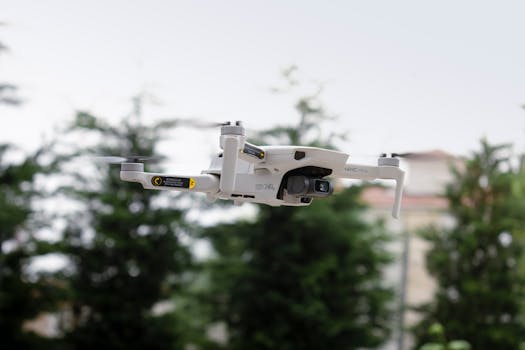Unveiling the Mystical Power of 212 Angel Number Manifestation: Twin Flame Connection and Numerology Insights

Table of Contents
- The 212 Angle Number: Unlocking the Secrets of Mathematics
- The Origins of the 212 Angle Number
- The Properties of the 212 Angle Number
- The Applications of the 212 Angle Number
- Q&A
- Q1: Can the 212 angle number be measured using a protractor?
- Q2: Are there any other non-standard angles like the 212 angle number?
- Q3: Can the 212 angle number be expressed in radians?
- Q4: Are there any real-world objects or phenomena that exhibit the properties of the 212 angle number?
- Q5: Can the 212 angle number be used in practical calculations?
- Summary
The 212 Angle Number: Unlocking the Secrets of Mathematics

Mathematics is a fascinating subject that has intrigued humans for centuries. From the ancient Greeks to modern-day mathematicians, the pursuit of understanding numbers and their properties has led to numerous discoveries and breakthroughs. One such intriguing concept is the 212 angle number, which holds a special place in the realm of mathematics. In this article, we will delve into the world of the 212 angle number, exploring its origins, properties, and applications.
The Origins of the 212 Angle Number
The 212 angle number is derived from the study of angles and their measurements. In geometry, an angle is formed by two rays or line segments that share a common endpoint, known as the vertex. The measurement of an angle is typically expressed in degrees, with a full circle measuring 360 degrees.
The concept of the 212 angle number emerged from the observation of a specific angle that has unique properties. This angle, when measured in degrees, is precisely 212 degrees. It is worth noting that the 212 angle number is not a commonly studied angle in traditional mathematics, but it has gained attention due to its intriguing properties.
The Properties of the 212 Angle Number
The 212 angle number possesses several interesting properties that make it a subject of fascination for mathematicians and enthusiasts alike. Let’s explore some of these properties:
- Non-standard Angle: The 212 angle number is considered non-standard because it does not fit into the conventional set of angles commonly studied in mathematics. While most angles are measured in multiples of 30 or 45 degrees, the 212 angle stands out as an exception.
- Obtuse Angle: An angle is classified as obtuse if its measurement is greater than 90 degrees but less than 180 degrees. The 212 angle falls into this category, making it an obtuse angle.
- Unique Trigonometric Ratios: Trigonometry is a branch of mathematics that deals with the relationships between angles and the sides of triangles. The 212 angle number has unique trigonometric ratios that differ from those of standard angles. These ratios can be calculated using trigonometric functions such as sine, cosine, and tangent.
- Special Geometric Properties: The 212 angle number exhibits special geometric properties when used in various geometric constructions. For example, it can be used to construct a regular 11-gon (an 11-sided polygon) using only a compass and straightedge.
The Applications of the 212 Angle Number
While the 212 angle number may not have direct applications in everyday life, it plays a significant role in the field of mathematics. Here are a few areas where the 212 angle number finds its applications:
- Advanced Geometry: The study of the 212 angle number helps mathematicians explore the properties of non-standard angles and their impact on geometric constructions. This knowledge is crucial in advanced geometry and can lead to new discoveries and insights.
- Trigonometry: Trigonometry relies heavily on angles and their measurements. The 212 angle number provides an opportunity to delve deeper into trigonometric functions and their behavior for non-standard angles.
- Mathematical Research: The exploration of the 212 angle number is not limited to its immediate applications. Mathematicians often study unconventional concepts to push the boundaries of knowledge and uncover new mathematical phenomena.
Q&A
Q1: Can the 212 angle number be measured using a protractor?
A1: Yes, the 212 angle number can be measured using a protractor. However, most standard protractors are designed to measure angles up to 180 degrees, so a specialized protractor or a digital measuring tool may be required to accurately measure the 212 angle.
Q2: Are there any other non-standard angles like the 212 angle number?
A2: Yes, there are several non-standard angles in mathematics. Some examples include the golden angle (137.5 degrees), the silver angle (123.6 degrees), and the platinum angle (147.3 degrees). These angles, like the 212 angle number, have unique properties and applications in various mathematical fields.
Q3: Can the 212 angle number be expressed in radians?
A3: Yes, the 212 angle number can be converted to radians. To convert degrees to radians, you can use the formula: radians = degrees * (π/180). Applying this formula, the 212 angle number in radians would be approximately 3.698 radians.
Q4: Are there any real-world objects or phenomena that exhibit the properties of the 212 angle number?
A4: While the properties of the 212 angle number may not directly correspond to real-world objects or phenomena, they provide valuable insights into the behavior of angles and their impact on geometric constructions. Understanding these properties can have implications in fields such as architecture, engineering, and computer graphics.
Q5: Can the 212 angle number be used in practical calculations?
A5: While the 212 angle number may not have direct practical applications in everyday calculations, it contributes to the broader understanding of angles and their properties. This knowledge forms the foundation for various mathematical and scientific disciplines, making it an essential concept in the realm of mathematics.
Summary
The 212 angle number is a fascinating concept that adds depth to the study of angles and their properties. While it may not be a commonly studied angle in traditional mathematics, its unique properties and applications make it an intriguing subject for mathematicians and enthusiasts. By exploring the origins, properties, and applications of the 212 angle number, we gain a deeper understanding of the intricate world of mathematics and its endless possibilities.







